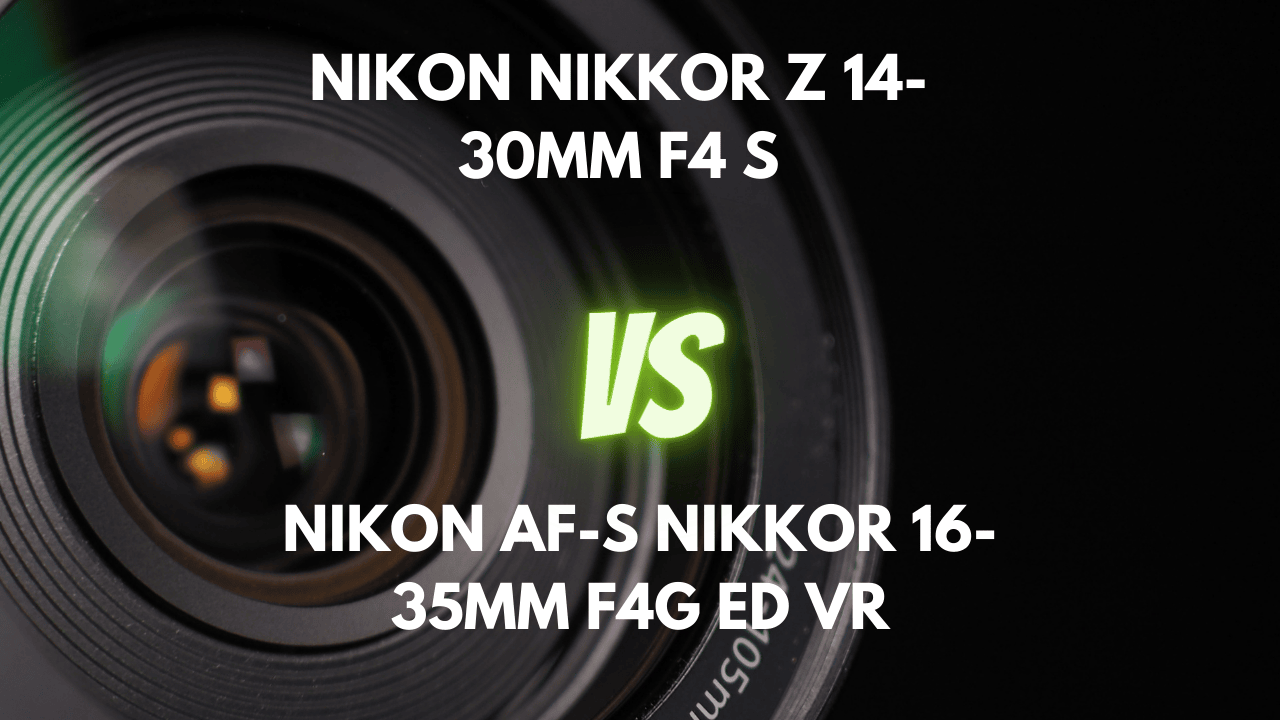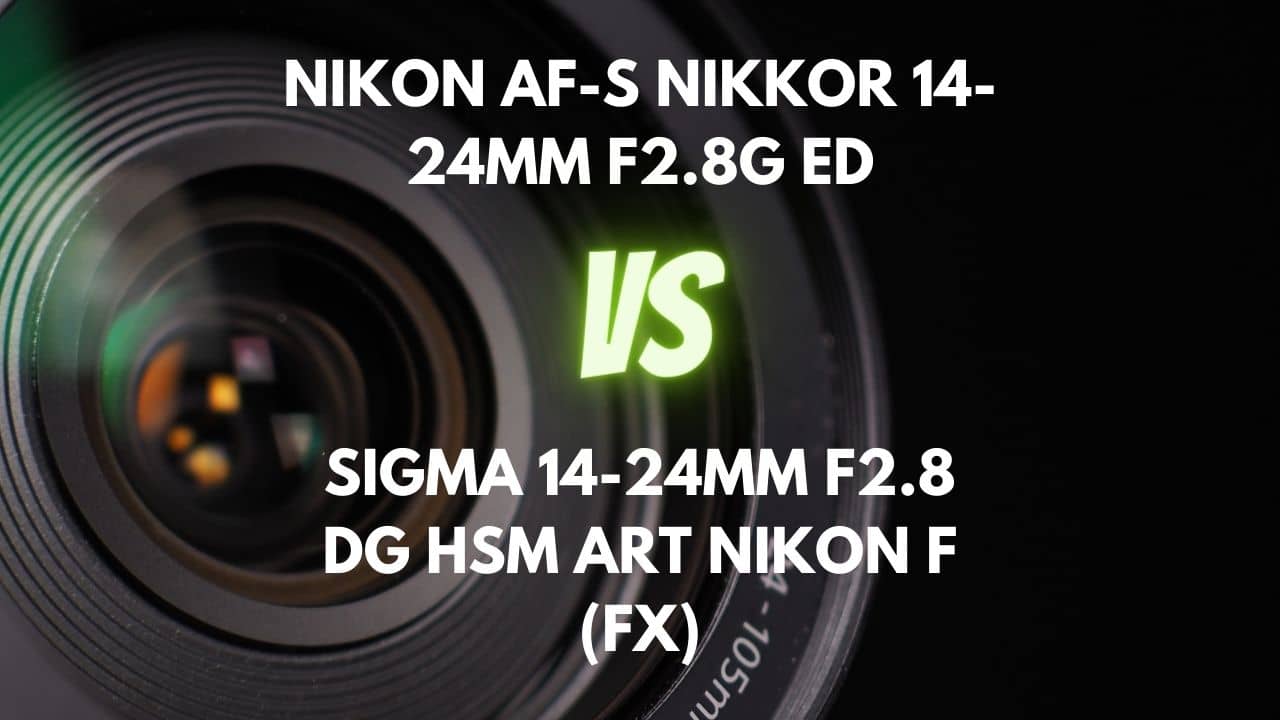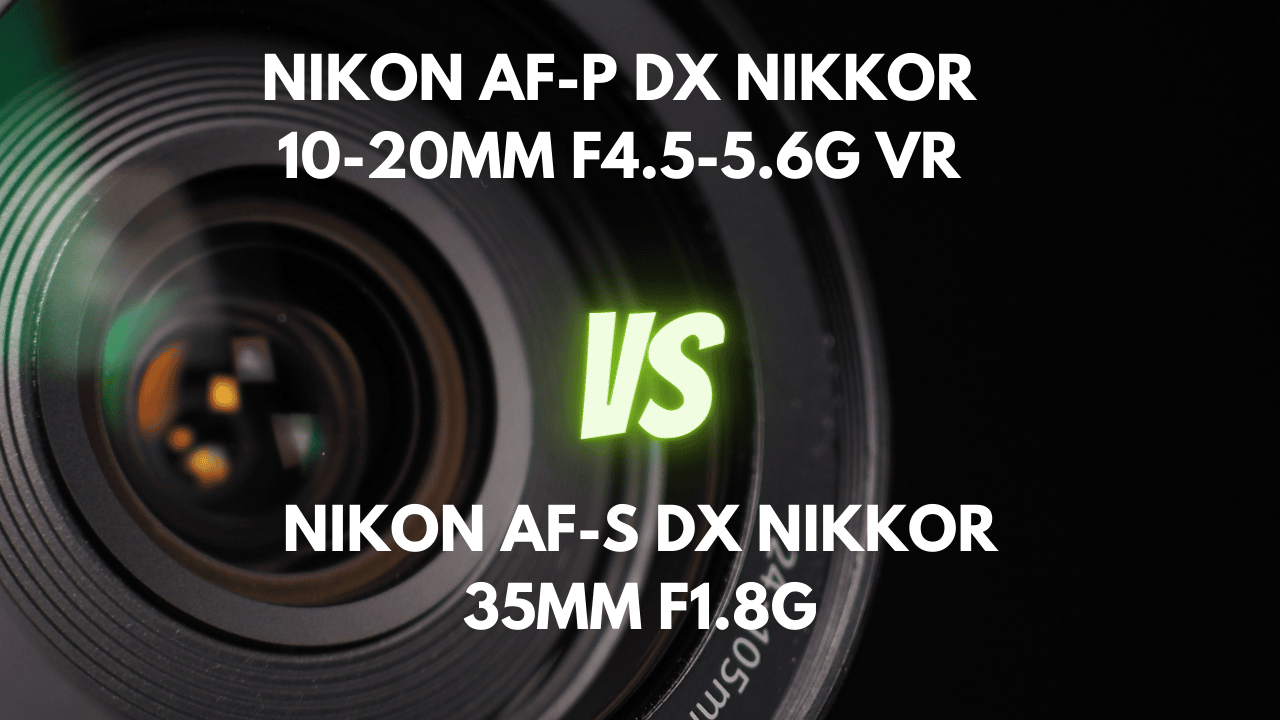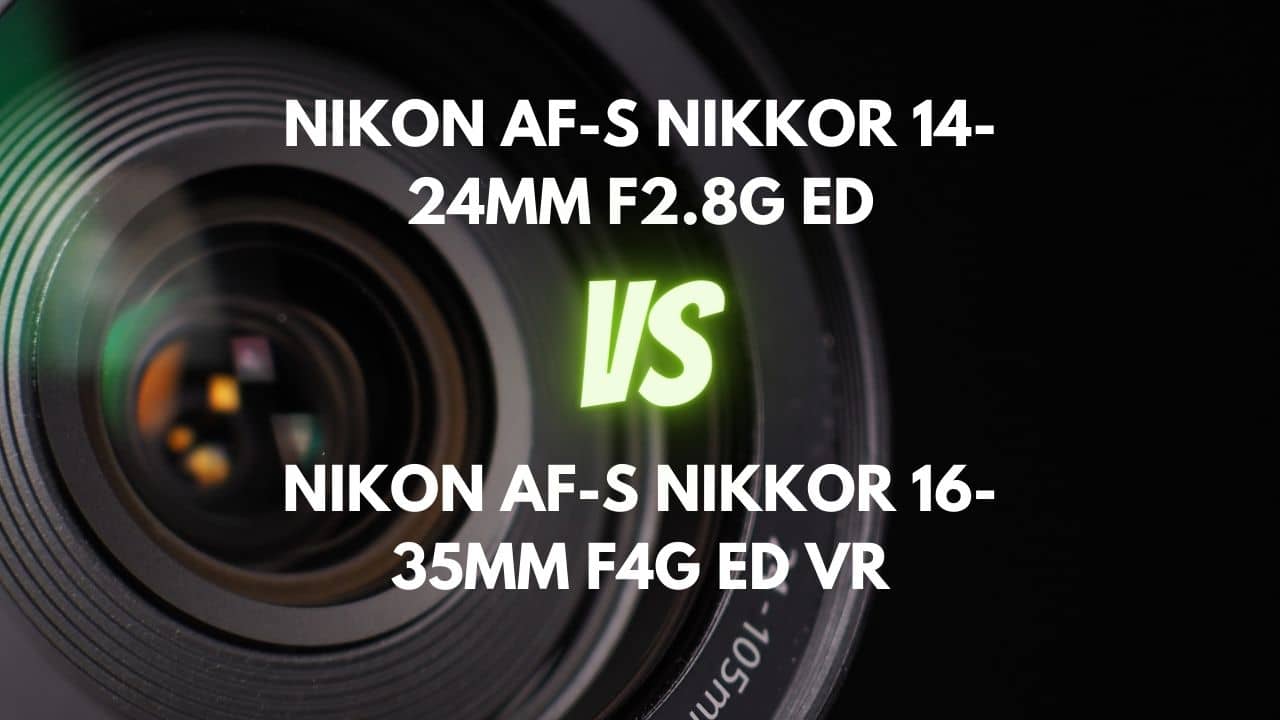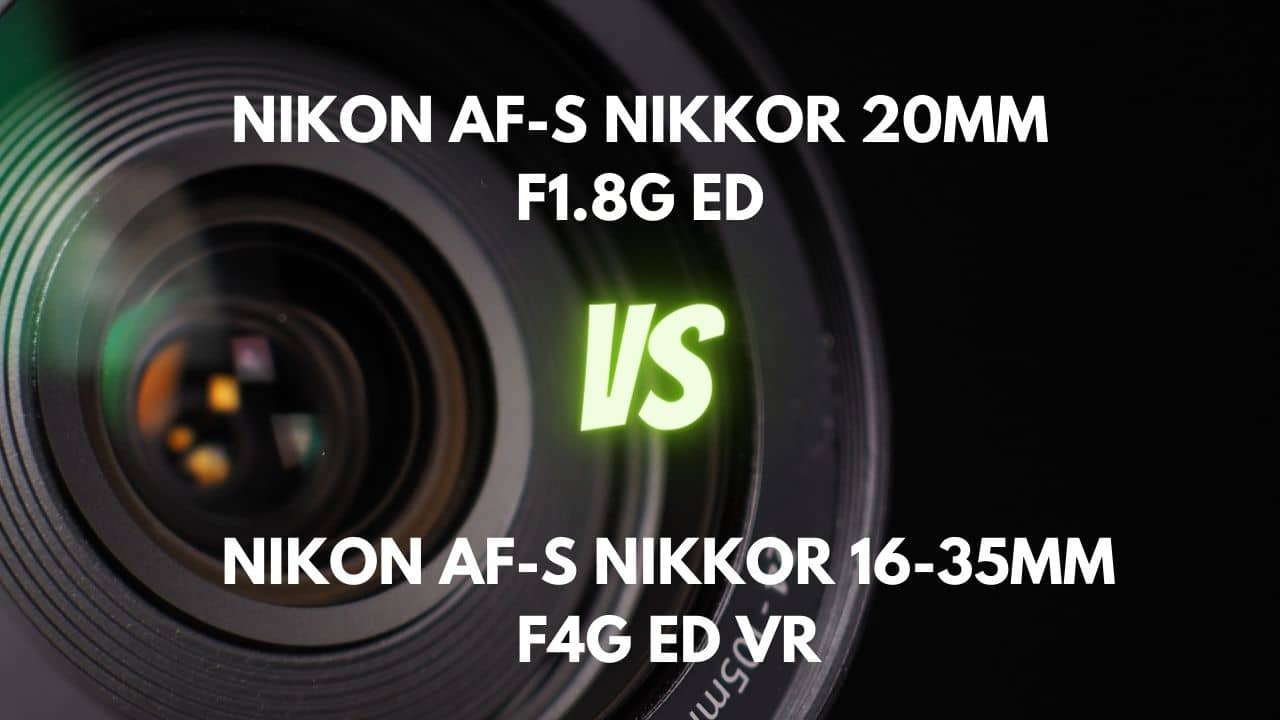Capturing breathtaking landscapes, sweeping cityscapes, and the magnificence of architectural marvels has always been a passion for photographers. The art of wide-angle photography allows us to encapsulate the essence of vast, expansive scenes, creating images that resonate with viewers and evoke emotions.
Today, I’m excited to delve into an in-depth comparison of two highly popular lenses in the Nikon DX lineup: the Nikon AF-P DX NIKKOR 10-20mm F4.5-5.6G VR and the Nikon AF-S DX NIKKOR 12-24mm F4G IF-ED.
Both lenses have garnered immense praise among photographers for their ability to deliver stunning wide-angle shots. Whether you’re a professional architectural photographer, an avid traveler capturing breathtaking vistas, or an enthusiast looking to expand your creative horizons, these lenses have the potential to elevate your photography to new heights.
Join me as we embark on a journey to explore the intricate details, unique features, and distinctive qualities of these remarkable lenses, helping you determine the perfect companion for your wide-angle adventures.
Overview
| Nikon AF-P DX NIKKOR 10-20mm F4.5-5.6G VR | Nikon AF-S DX NIKKOR 12-24mm F4G IF-ED | |
|---|---|---|
| Max Aperture | F4.5-5.6 | F4.0 |
| Aperture Type | Variable | Fixed |
| Focal Range (mm) | 10-20 | 12-24 |
| Max Format | APS-C / DX | APS-C / DX |
| Zoom Ratio (X) | 2 | 2 |
The Nikon AF-P DX NIKKOR 10-20mm F4.5-5.6G VR is a variable aperture lens with a maximum aperture of f/4.5-5.6, meaning that the aperture changes as you zoom in or out. Its focal range is 10-20mm, which is ideal for wide-angle photography. This lens is generally more affordable and lightweight compared to fixed aperture lenses, making it attractive for amateur or hobbyist photographers.
On the other hand, the Nikon AF-S DX NIKKOR 12-24mm F4G IF-ED is a fixed aperture lens with a constant maximum aperture of f/4.0 throughout its entire 12-24mm focal range. This lens performs better in low light situations, allowing for faster shutter speeds or lower ISO settings for cleaner, sharper images. The fixed aperture design also results in higher optical quality, with less distortion, chromatic aberration, and vignetting. However, this lens is typically more expensive and has a sturdier build quality, making it more appealing to professional photographers.
In summary, the Nikon DX 10-20 f/4.5-5.6 is a more affordable and lightweight option, but with a variable aperture that may result in slightly reduced image quality and low light performance. The Nikon DX 12-24 f/4, with its fixed aperture and superior optical performance, is a better choice for photographers who prioritize image quality and low light capabilities, albeit at a higher price.
Design and Ease of Use
| Nikon AF-P DX NIKKOR 10-20mm F4.5-5.6G VR | Nikon AF-S DX NIKKOR 12-24mm F4G IF-ED | |
|---|---|---|
| Diameter x Length (mm) | ⌀77×73mm | ⌀82.5×90mm |
| Weight (gr) | 230 | 485 |
| Filter Thread (mm) | 72 | 77 |
| Weather Sealing | No | No |
| Zoom Method | Rotary (extending) | Rotary (internal) |
| Zoom Lock | No | No Zoom |
| Distance Scale | No | Yes |
| DoF Scale | No | Yes |
| Hood Code | HB-81 | HB-23 |
Nikon DX 10-20 f/4.5-5.6 has a diameter of ⌀77mm and a length of 73mm, making it a more compact and lightweight lens at 230 grams. Its zoom method is rotary (extending), which means the lens physically extends when you zoom in or out. This design tends to be simpler and lighter but may pose challenges in terms of weather sealing and maintaining a consistent camera balance while zooming.
In contrast, the Nikon DX 12-24 f/4 has a larger diameter of ⌀82.5mm and a length of 90mm, resulting in a heavier lens at 485 grams. Its zoom method is rotary (internal), meaning the lens doesn’t change its physical size when you zoom in or out. This design usually maintains better weather sealing and consistent balance during shooting but can be more complex and heavier due to the additional mechanics required.
In terms of portability, balance, the 10-20mm f/4.5-5.6 is the superior choice, as it is more compact and lightweight. However, if you prioritize weather sealing and consistent balance while zooming, the Nikon 12-24mm f/4 may be a better option despite its larger size and heavier weight.
Lens Mount and Barrel
The Nikon DX 10-20 f/4.5-5.6 features a plastic lens mount, which contributes to its lightweight and budget-friendly nature. Despite the absence of a rubber gasket, the lens remains well-built and comes with a five-year warranty. Its lens barrel, constructed from polycarbonate plastic, is ergonomically designed with a wide zoom ring and a thin manual focus ring, making it easy to operate. The lens barrel extends when zooming, and although not as finely crafted as pricier options, it serves its purpose as an entry-level lens.
On the other hand, the Nikon DX 12-24 f/4 has a sturdy metal lens mount, indicating its high quality. Although it lacks a rubber seal, the metal mount ensures durability. The lens barrel, primarily made of high-quality plastics, is lightweight and easy to handle.
In conclusion, if you seek an affordable, lightweight, and portable option, the Nikon 10-20mm f/4.5-5.6 with its plastic lens mount and barrel is an excellent choice. However, if durability and a more professional feel are your top concerns, the 12-24mm f/4 with its metal lens mount and high-quality plastic barrel may be the superior choice.
Weather Sealing
The Nikon DX 10-20 f/4.5-5.6 does not have weather sealing, which means it lacks protective measures such as gaskets and internal seals to prevent dust, moisture, and light water splashes from entering the lens. This could be a concern for photographers who frequently shoot in extreme humid or wet environments, as the lens may be more prone to damage and wear over time without proper protection.
On the other hand, the Nikon DX 12-24 f/4 also lacks weather sealing, meaning it too is vulnerable to environmental elements like dust and moisture. With no gasket at the lens mount or internal seals at the rings, switches, or front of the barrel, photographers using this lens should be cautious in challenging weather conditions.
In conclusion, neither of these lenses has a clear advantage in terms of weather sealing, as both lack the protective features necessary for optimal performance in adverse conditions. If weather sealing is a critical factor for you, it may be worthwhile to consider other lenses with more robust protection against environmental elements. However, if you can manage to avoid challenging weather conditions or provide extra protection for your lenses, both of them can still deliver excellent results.
Rings
The Nikon DX 10-20 f/4.5-5.6 features 2 rings: a large zoom ring and a slim manual focus ring. The zoom ring, taking up most of the barrel, is marked at 10, 12, 14, 16, and 20mm, and is covered with a textured rubber grip for comfortable handling.
However, the manual focus ring, located just behind the front element, is quite narrow, making it somewhat tricky to turn. Despite the lack of a windowed distance scale or depth-of-field indicator on the focus ring, the lens allows you to override autofocus by simply rotating the focus ring at any time. Both rubberized rings are smooth, and the zoom ring is easy to operate.
On the other hand, the Nikon DX 12-24 f/4 also has 2 rings: a broad, rubberized zoom ring and a slim focus ring. The zoom ring is smooth when rotating, with no extension lock switch. The focus ring, located close to the mount, is also smooth when rotating. This lens features a distance window behind the focus ring, displaying the focused distance with a hyper-focal scale. However, it lacks a depth-of-field indicator and infrared marks. Both rings offer a solid and comfortable tactile experience, with good ergonomic bevels.
In conclusion, both lenses have their advantages when it comes to ring design. The 10-20mm f/4.5-5.6 lens offers a larger, textured rubber grip on the zoom ring, making it more comfortable to use, while the 12-24mm f/4 lens provides a distance window and a hyper-focal scale for more precise focusing. Ultimately, if you value comfort and ease of operation, the 10-20mm f/4.5-5.6 lens may be more suitable. However, if precision and additional focusing aids are more important to you, the 12-24mm f/4 lens might be the better option.
Switches/Buttons
The Nikon DX 10-20 f/4.5-5.6 keeps things minimalistic when it comes to switches and buttons, having none on the barrel itself. This design choice affects compatibility with some Nikon cameras. To change focus modes, users must rely on the switch located on the camera. Additionally, there’s no physical VR (Vibration Reduction) switch, which means turning off the VR feature can only be done through the camera’s menus. Despite the absence of an AF/MF switch, manual override and fully manual focusing are available via an electronically coupled focus ring.
In contrast, the Nikon DX 12-24 f/4 features a switch for manual and automatic focus mode (M/A – M), offering a more accessible way to change between focus modes. Similar to the 10-20mm lens, there’s no switch for VR (Vibration Reduction). The lens maintains a minimalistic approach to switches and buttons, focusing on basic functions.
In summary, the 12-24mm f/4 lens has a slight edge over the 10-20mm f/4.5-5.6 lens when it comes to switches and buttons. The presence of a manual and automatic focus mode switch on the 12-24mm lens provides more convenience and accessibility for photographers. However, both lenses adopt a minimalistic approach, so the choice ultimately depends on your personal preferences and the importance you place on easily accessible focus mode switches.
Filter Thread
The Nikon DX 10-20 f/4.5-5.6 features a 72mm filter thread made of metal at the front of the lens, surrounding the front element. This filter thread is easy to use with conventional filters, and it doesn’t rotate during autofocus, making it convenient for photographers who use polarizing or graduated filters. This non-rotating filter thread is a standard feature for most modern lenses.
On the other hand, the Nikon DX 12-24 f/4 has a 77mm plastic filter ring. The front element does not rotate during focusing, thanks to Internal Focusing (IF), so using filters like polarizers or petal-shaped hoods is hassle-free. The lens remains constant in length as the front element moves within the lens tube during zooming, which makes it easy to use filters.
In conclusion, both lenses offer non-rotating filter threads that make using filters easy and convenient. However, the 10-20mm lens has a metal filter thread, which provides more durability and longevity compared to the plastic filter ring of the 12-24mm lens. Therefore, if you prioritize the durability of the filter thread, the Nikon 10-20mm lens is the superior choice. Nevertheless, both lenses deliver a pleasant user experience when working with filters, so your preference for metal or plastic filter threads will be the deciding factor.
Lens Hood
The Nikon DX 10-20 f/4.5-5.6 comes with a large petal-type lens hood made of plastic, included in the box. Featuring a bayonet mount, this lens hood is easily reversible over the lens barrel when not in use. The hood’s material and finish are of good quality, ensuring easy mounting and dismounting. Its ergonomic bevel design allows for smooth rotation when adjusting the direction of light.
In contrast, the Nikon DX 12-24 f/4 includes a plastic HB-23 petal-shaped lens hood in the box. This hood is designed to be fixed in special grooves near the front lens element, enabling it to be installed in the opposite direction for transportation without losing access to the zoom ring. The hood does not affect vignetting in the 16-24mm range and is compatible with polarizers since the front element does not rotate.
In conclusion, both lens hoods are petal-shaped and made of plastic, providing efficient protection against glare and unintentional contact with the front element. Both lens hoods deliver effective performance and contribute to the overall user experience with their respective lenses.
Focusing and Optical Stabilization
| Nikon AF-P DX NIKKOR 10-20mm F4.5-5.6G VR | Nikon AF-S DX NIKKOR 12-24mm F4G IF-ED | |
|---|---|---|
| Autofocus | Yes | Yes |
| AF Motor | Stepper motor | Ultrasonic |
| Rotating Front Element | Does not rotate on focusing | Does not rotate on focusing |
| Min Focus Distance | 0.22m | 0.3m |
| Max Magnification (X) | 0.17 | 0.12 |
| Full-Time Manual Focus | Yes | Yes |
| Focus Method | Internal | Internal |
Focusing Performance
The Nikon DX 10-20 f/4.5-5.6 boasts a swift and quiet autofocus performance, thanks to its AF-P stepper motor. This feature ensures the elimination of jitters and shudders in handheld video recordings. The lens offers accurate focusing and a convenient manual focus override ring for making quick adjustments. With a reasonably fast focusing speed and impressive autofocus acquisition, this lens also excels in low-light situations. The manual focus action is precise and smooth; however, a slight hum may be noticeable in quiet environments.
On the other hand, the Nikon DX 12-24 f/4 employs a Silent Wave Motor (SWM) for rapid and noiseless autofocus performance. Similar to its counterpart, this lens provides manual focus override and a smooth manual focus action. The internal focusing design ensures that the lens length remains constant, irrespective of focus and zoom settings. Its autofocus acquisition speed is snappy, and the lens is accurate when focusing. In low-light conditions, the autofocus performance remains commendable.
In conclusion, both lenses exhibit exceptional focusing performance with their respective motors (AF-P stepper motor and SWM) ensuring fast and quiet autofocus. Although the 10-20mm lens emits a slight hum during focusing, both lenses perform well in low-light situations and offer manual focus Ultimately, both lenses deliver excellent focusing performance for a variety of photographic situations.
Optical Stabilization
The Nikon DX 10-20 f/4.5-5.6 boasts built-in optical stabilization, allowing you to shoot at shutter speeds 3.5 stops slower than usual without causing blurring due to camera shake. This makes it an effective choice for handheld shooting in lower light conditions. The lens enables shooting at slower shutter speeds, typically around 1/10 of a second, and even as slow as 1/6 of a second, with the caveat that slower shutter speeds may yield mixed results. Additionally, the Vibration Reduction (VR) system operates silently.
On the other hand, the Nikon DX 12-24 f/4 does not have optical stabilization. This means that it may not perform as well in handheld shooting or low-light situations compared to the Nikon 10-20mm lens.
Although optical stabilization is not always essential for wide-angle lenses, it can provide benefits in certain situations, such as low-light conditions, slower shutter speeds, or video recording. However, factors like camera support or faster lenses may be more important for achieving sharp images. Many modern cameras offer in-body image stabilization (IBIS), which can work effectively with wide-angle lenses to minimize camera shake, even if the lens lacks built-in optical stabilization.
Overall, the 10-20mm lens has a superior optical stabilization system compared to the 12-24mm lens, making it a better choice for handheld shooting and low-light situations where stabilization is desired.
Image Quality
| Nikon AF-P DX NIKKOR 10-20mm F4.5-5.6G VR | Nikon AF-S DX NIKKOR 12-24mm F4G IF-ED | |
|---|---|---|
| Special Elements | 3 aspherical + Super Integrated Coating | 2x ED glass elements and 3x aspherical lens elements |
| Diaphragm Blades | 7 | 7 |
Aberration
The Nikon DX 10-20 f/4.5-5.6 experiences noticeable chromatic aberration, especially near the edges of the frame when shooting wide open at 10mm. Although coma is not a significant issue, spherochromatism may produce colored fringes on out-of-focus highlights in certain situations, but this is not a major concern.
In contrast, the Nikon DX 12-24 f/4 lens exhibits varying levels of chromatic aberration depending on the focal length and aperture used. The most prominent aberration occurs at 18mm and f/4, where it approaches one pixel-width. Fortunately, stopping down typically reduces this effect to levels below the threshold of noticeability.
Despite this, compatible cameras’ JPEG engines effectively remove most of the aberration, and any remaining traces can be corrected in post-processing.
When comparing aberration control, the 12-24mm lens performs better, especially when stopped down. By managing chromatic aberration effectively at various focal lengths and apertures, this lens provides a more consistent image quality compared to the 10-20mm lens, whose aberration is more prominent at specific settings.
Sharpness
The Nikon DX 10-20 f/4.5-5.6 offers good to very good sharpness performance. At 10mm, the sharpness is evenly distributed from wide open up to f/14 and peaks between f/8 and f/11 at other focal lengths like 12, 14, 16, and 18mm. While edge and corner sharpness may be somewhat lackluster at 20mm, the center sharpness remains impressive throughout most of the zoom range even when shooting wide open. However, diffraction affects sharpness at f/11 and smaller apertures.
On the other hand, the Nikon DX 12-24 f/4 provides exceptional sharpness across almost all focal lengths and apertures. At 12mm, there’s a slight softness at the farthest edge, which is usually unnoticeable. The center sharpness is outstanding, but the edges and corners are less impressive at 12mm and wide open at f/4. Stopping down to f/8 significantly enhances sharpness, even at extreme corners. This lens exhibits some field-curvature, particularly at 12mm, but overall delivers sharp, contrasty images with color and contrast consistent with other Nikkor lenses.
In conclusion, the 12-24mm lens outperforms the 10-20mm lens in terms of sharpness. With its excellent center sharpness and improved edge and corner performance when stopped down, the 12-24mm lens is the superior choice for photographers seeking optimal sharpness in their wide-angle shots.
Bokeh Quality
When comparing the bokeh quality of the Nikon DX 10-20 f/4.5-5.6 and the Nikon DX 12-24 f/4, it’s important to note that bokeh is not a primary concern for wide-angle lenses. However, there are instances where bokeh quality can be a factor in specific photographic situations.
The Nikon DX 10-20 f/4.5-5.6 offers a relatively decent bokeh, although it can be somewhat inconsistent due to its ultra-wide to wide zoom range and slow aperture. Achieving substantial bokeh is rare, but with careful subject selection, camera settings, and composition, you can create a pleasing background blur.
On the other hand, the Nikon DX 12-24 f/4 has a weak bokeh effect, as a result of its large minimum focus distance (MDF), short focal length, and low aperture ratio. These factors contribute to a lack of bokeh aesthetics in the images it produces.
In conclusion, neither of these wide-angle lenses is particularly strong in terms of bokeh quality. However, the 10-20mm lens has a slight edge over the 12-24 lens due to its more controlled and occasionally pleasant bokeh, as long as the proper technique is employed.
Flare/Ghosting
The Nikon DX 10-20 f/4.5-5.6 and Nikon DX 12-24 f/4 lenses both exhibit good flare and ghosting control, which is important for photographers who want to maintain image quality when shooting in challenging lighting conditions.
The 10-20mm lens manages flare and ghosting exceptionally well, demonstrating minimal reduction in contrast or creation of artifacts in images. It even outperforms other lenses, such as the fixed prime FX Nikkor 20mm AF-S f/1.8, when the sun is directly in the frame. Additionally, side light hitting the front glass doesn’t cause significant issues.
On the other hand, the 12-24 lens also offers excellent flare control and minimal ghosting, ensuring shots aren’t ruined by flare. While it performs reasonably well overall, some users have reported small yellow dots near the edge of the photo when a point light source is just outside the image. This issue can be mitigated by shielding the light with your hand or using a shallow petal-shaped hood. Using a non-Nikon brand filter may result in a small ghost near light sources, but generally, flare isn’t a major problem for this lens, especially considering the common challenges of ultra-wide shots.
In conclusion, both lenses have commendable flare and ghosting control, making them suitable for photographers working in a variety of lighting conditions. However, the 10-20mm lens slightly outshines the 12-24mm lens in terms of flare and ghosting performance, as it shows fewer issues overall and even outperforms other lenses in certain situations.
Vignetting
The Nikon DX 10-20 f/4.5-5.6 and Nikon DX 12-24 f/4 lenses differ in their vignetting characteristics, which can affect the overall image quality and require post-processing adjustments.
The 10-20mm lens experiences noticeable vignetting at 10mm, particularly when shooting wide open. This effect improves as the focal length increases to 15mm and 20mm. While vignetting is most pronounced at 10mm, it can be corrected using post-processing software programs. In real-life situations, vignetting is often less problematic than it might appear in sample images.
In contrast, the 12-24mm lens exhibits some vignetting, especially when using thicker filters. Vignetting from medium-thick filters disappears in the 19-24mm range. At 16-17mm, vignetting is nearly invisible, and from 18mm onwards, it is completely absent.
In conclusion, the 12-24mm lens performs better in terms of vignetting control compared to the 10-20mm lens. The 12-24mm lens exhibits less vignetting overall and provides more consistent image quality across various focal lengths, making it the superior choice for photographers concerned about vignetting.
Distortion
The Nikon DX 10-20 f/4.5-5.6 and Nikon DX 12-24 f/4 exhibit different distortion characteristics, which can influence the overall image quality and post-processing requirements.
The 10-20mm lens displays barrel distortion, which is more prominent at the shortest focal length of 10mm and decreases as you zoom in, becoming nearly non-existent at the longer end. Although distortion at 10mm is noticeable at 3.55%, it is quite acceptable for a consumer lens in this category.
In comparison, the 12-24mm lens exhibits complex distortion most evident at 12mm, with a visible barrel distortion of 4.39%. This makes it unsuitable for images with straight lines near the edge of the frame. Distortion is not uniform, with lines close to the long edges appearing almost straight in the middle but bending more severely towards the corners.
Although distortion can be partially corrected using advanced tools, it is advisable to use the lens between 15mm and 18mm when straight lines running along the edges of the frame are essential. At 24mm, distortion becomes pillow-shaped and is much lower, with only slight pincushion distortion of 0.242%. The lens is suitable for general-purpose and practical wide-angle zoom photography but not recommended for architectural photography due to distortion issues.
In real-world shooting, distortion is manageable and can be corrected in-camera for JPGs or with software like Lightroom Classic for RAW images. Some correction might be necessary for those seeking exceptional results straight out of the camera.
In conclusion, the 10-20mm lens demonstrates superior distortion control compared to the 12-24mm lens. The 10-20mm lens offers more manageable distortion, making it a better choice for photographers concerned about distortion in their images.
Final Verdict
After considering all the factors, the Nikon DX 10-20mm f/4.5-5.6 and Nikon DX 12-24mm f/4 lenses cater to different types of photographers and use cases.
The 10-20mm is an affordable, lightweight, and portable lens suitable for travel photographers, casual shooters, and those on a budget. It offers good image quality, comfort, ease of operation, and superior optical stabilization. This lens is a great choice for those who prioritize portability and affordability without sacrificing too much on performance.
On the other hand, the 12-24mm is designed for professional photographers and those who prioritize image quality, low light capabilities, and durability. This lens outperforms the 10-20mm in terms of sharpness, chromatic aberration control, vignetting control, and distortion control. Although it comes at a higher price and is heavier, it’s ideal for photographers who demand superior optical performance and build quality.
In conclusion, if you’re looking for an affordable, lightweight, and portable lens with good performance, the Nikon 10-20mm f/4.5-5.6 is a solid choice. However, if you’re willing to invest in a lens with superior optical performance and build quality, the Nikon 12-24mm f/4 is the better option.

